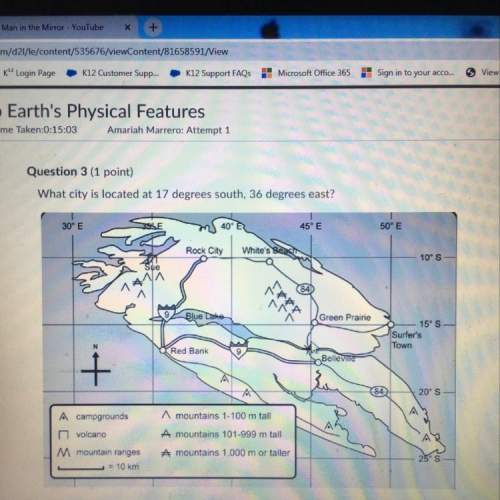
Chemistry, 13.02.2020 21:01 teasleycarl53
Determine the molar solubility (S) of Ag2CO3 in a buffered solution with a pH of 4.207 using the systematic treatment of equilibrium. Ksp(Ag2CO3) = 8.46 × 10–12; Ka1(H2CO3) = 4.45 × 10–7; Ka2(H2CO3) = 4.69 × 10–11.
Given Hint: Use the systematic treatment of equilibrium to solve this problem. 1. Write the pertinent reactions. 2. Write the charge balance equation. 3. Write the mass balance equations. 4. Write the equilibrium constant expressions for each reaction. 5. Count the equations and unknowns. 6. Solve for all unknowns.

Answers: 2
Another question on Chemistry


Chemistry, 22.06.2019 00:30
What must happen before a body cell can begin mitotic cell division
Answers: 2

Chemistry, 22.06.2019 00:30
Microtubular fibers that assist in the movement of chromosomes during nuclear division in conjunction with proteins, makes up the small and large organelle pieces that assemble prior to translation three-base nucleotide sequence that can complementarily pair with the functional transcript, allowing a particular material to be brought to a ribosome particular time in the cell cycle when the cell’s systems determine if the cellular conditions are appropriate to continue through the cycle time in the cell’s cycle when proteins are made and organelles are duplicated enzyme that allows proper nucleotide bonding during transcription specific dna sequence which will initiate gene transcription division of the cell’s cytoplasm specific bond that forms between two amino acids when a carboxyl group binds to a amino group three-base sequence that does not code for a particular amino acid a paired organelle which facilitates the formation of movement microtubules time in the cell’s cycle when the microtubular structures exert an equal pressure on the cell’s genetic material
Answers: 2

Chemistry, 22.06.2019 08:30
The characteristic of two different types of reactions are shown below. reaction a: electrons are gained by the atoms of an element. reaction b: protons are lost by the atom of and element. which statement is true about the atoms of the elements that participate in the two reactions? a: their identity changes in both reaction a and b. b: their identity changes in reaction a but not b. c: their identity changes in reaction b but not a. d: their identity remains the same.
Answers: 1
You know the right answer?
Determine the molar solubility (S) of Ag2CO3 in a buffered solution with a pH of 4.207 using the sys...
Questions



Mathematics, 14.04.2021 05:20

Social Studies, 14.04.2021 05:20

Mathematics, 14.04.2021 05:20


Mathematics, 14.04.2021 05:20




Mathematics, 14.04.2021 05:20


Mathematics, 14.04.2021 05:20

Computers and Technology, 14.04.2021 05:20





History, 14.04.2021 05:20




